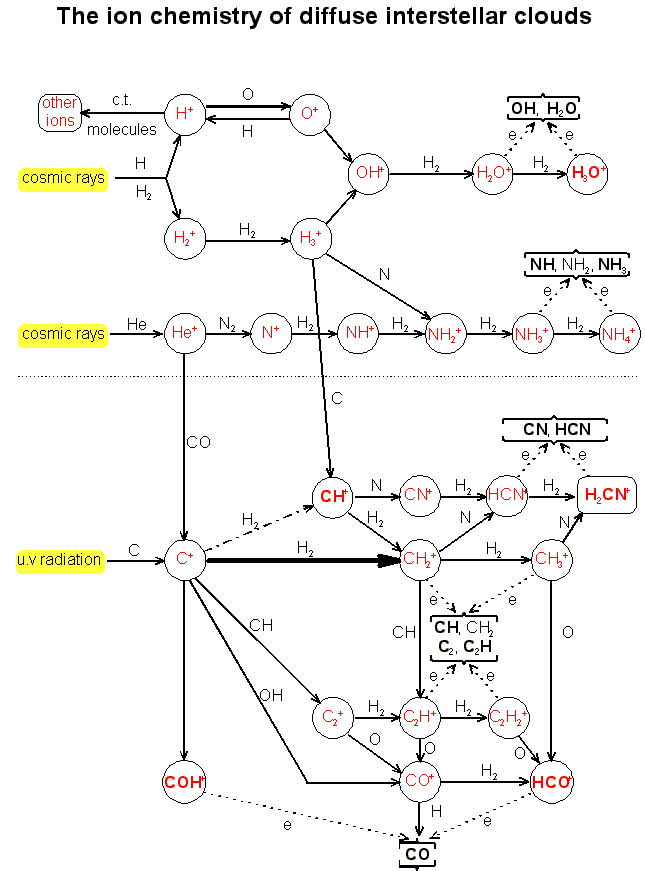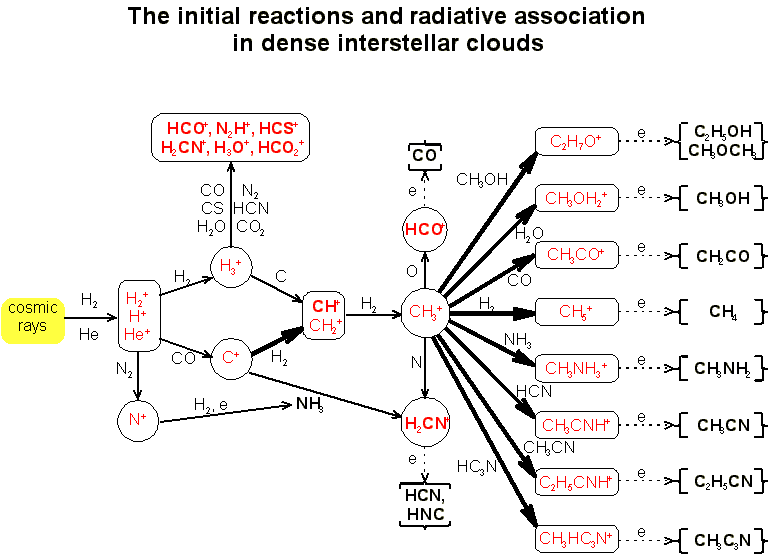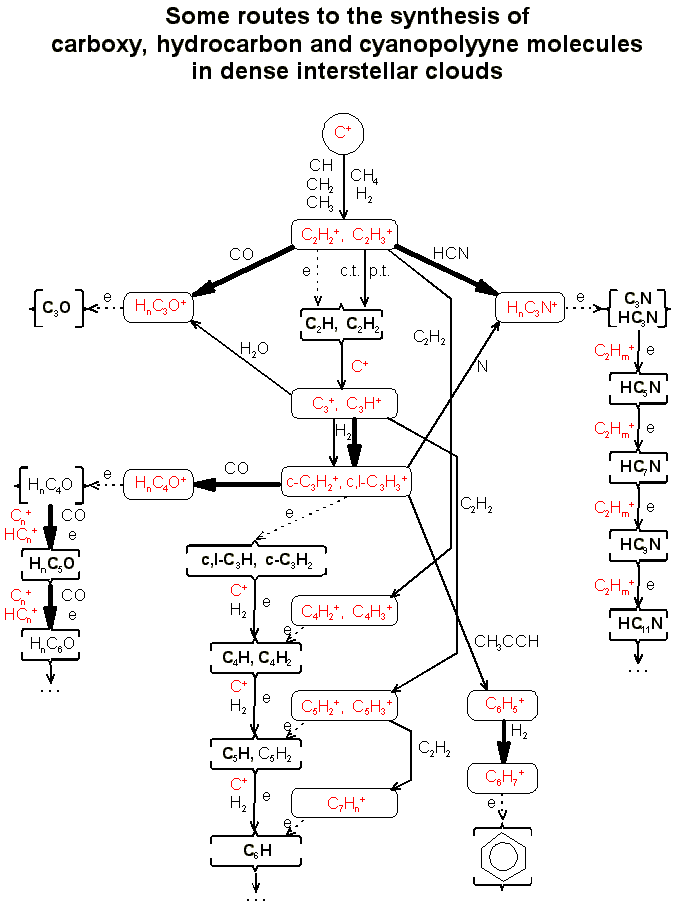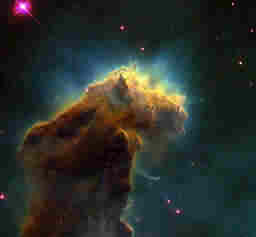
A detailed discussion of the reaction processes included here is presented in a review:
D. Smith and P. Spanel,
"Ions in the Terrestrial Atmosphere and in Interstellar
Clouds",
Mass Spectrometry Reviews, 14 (1995) 255-278.
 |
| Binary ion-molecule reactions are indicated by thin arrows (c.t. indicates charge transfer), the radiative association reaction of C+ with H2 is indicated by the thick arrow, and the dissociative recombination reactions are indicated by dashed arrows leading to the neutral molecules inside the compound brackets (e indicates free electrons). The molecules indicated in bold are known (observed) interstellar molecules. |
 |
|---|
| The binary ion-molecule reactions are indicated by thin arrows, the radiative association reactions are indicated by thick arrows, and the dissociative recombination reactions are indicated by dashed arrows leading to the neutral molecules inside the compound brackets. The molecules indicated in bold are known (observed) dense cloud interstellar molecules. Note the central role of CH3+ ions in this chemistry. |
 |
| Proton transfer is indicated as p.t.. When both a molecule (or an ion) and e are associated with an arrow, it implies that ion-neutral reactions occur first and then the product ions undergo dissociative recombination with electrons to produce the molecules inside the compound brackets at the arrow head. C2H2 is important in the hydrocarbon chemistry. |

A detailed discussion of the reaction processes included here is presented in a review:
D. Smith and P. Spanel, "Ions in the
Terrestrial Atmosphere and in Interstellar Clouds",
Mass Spectrometry Reviews, 14 (1996) 255-278.